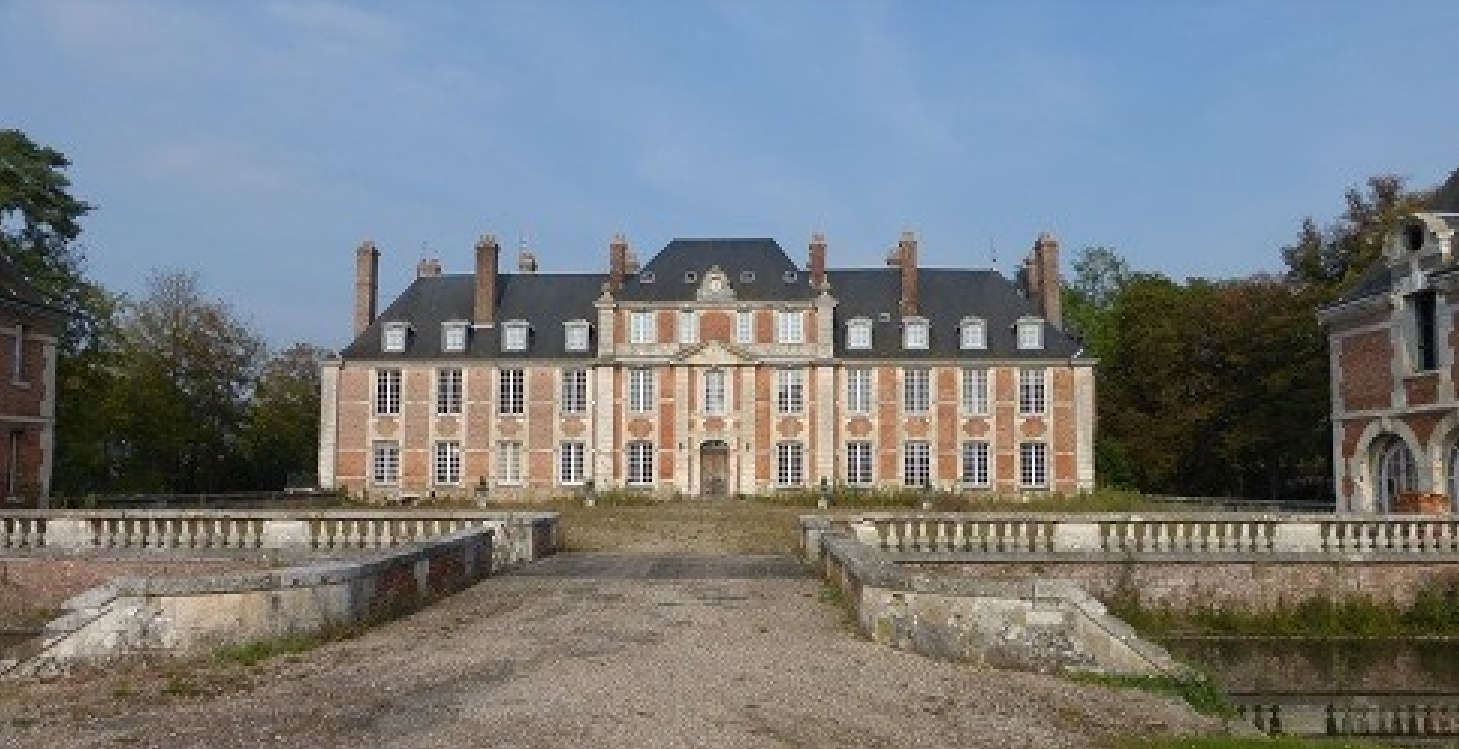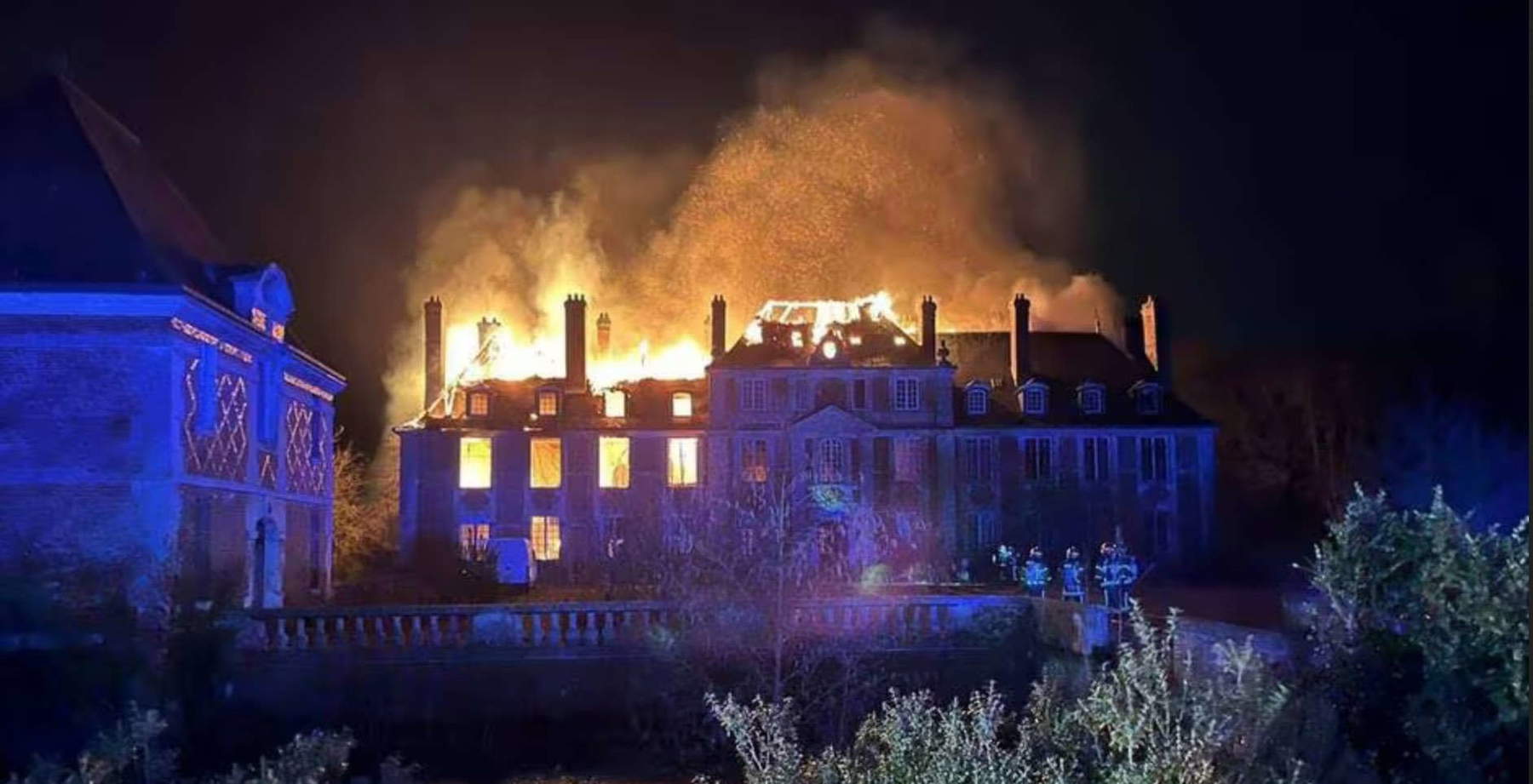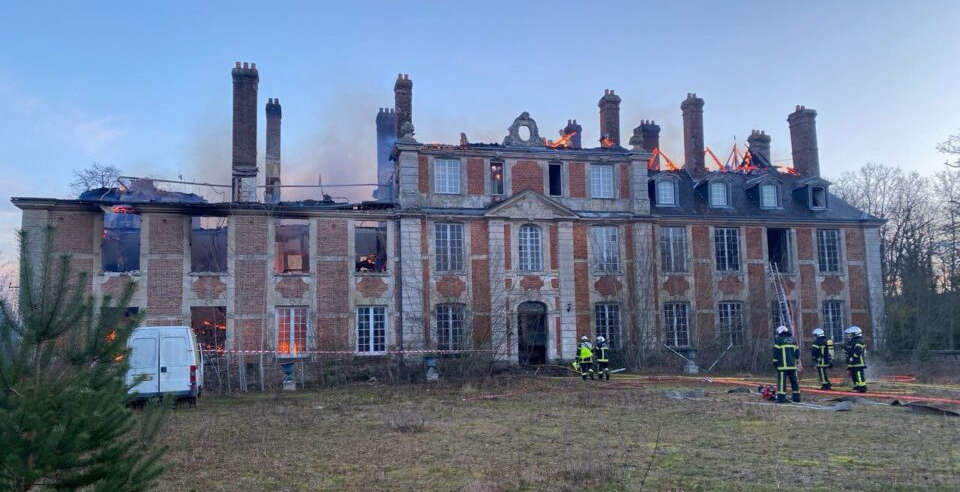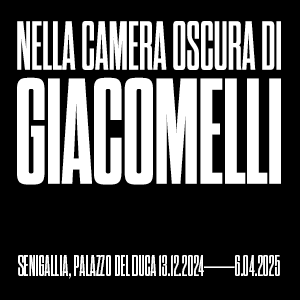France, fire destroys 17th century chateau in Serquigny
In France, a heavy fire devastated at dawn on Dec. 31 the Château de Serquigny (also known as Château de Grand-Serquigny to distinguish it from a similar but smaller structure nearby), a 17th-century building located in the small town of Serquigny in Normandy, Eure department. The château had been abandoned for several years, despite being classified as a historic monument (albeit with a partial lien), and is still at the center of a complex administrative affair to identify all of the building’s 40 or so owners: the ownership of the château was in fact fractionated, a rather common situation in France for historic buildings. Firefighters responded to the scene, but had difficulty with a difficult crossing of a small bridge over a moat around the castle. The structure is now unsafe. The gendarmerie opened an investigation as early as Dec. 31 to figure out where it originated.
The damage is very extensive, the prefecture of Eure let it be known: the roof is completely destroyed. Only the two facades and one of the wings, which are subject to possible collapse and the effects of the quantities of water dumped on the structure to put out the fire, may be partially preserved. Two of the chimneys were lost in the fire, and two others may come loose under the effect of strong wind gusts, as they are no longer attached to the structure. Laser rangefinders have been installed to monitor the stability of the facades and other built elements. For safety reasons it is now forbidden to approach the disaster site, which is guarded by the national gendarmerie. There is a detour nearby. The prefecture is now conducting a thorough reconnaissance of the site.
Many of the owners of the castle appear to be nowhere to be found. In the plans was to make apartments inside the building. In any case, some of them have made their voices heard: one of the owners, former footballer Bryan Bergougnoux, a past between Olympique Lyon, Toulouse and Tours and a militancy also in Italy (among the ranks of Lecce), in fact considers himself to be the injured party (“The castle where, like many other people, I bought land,” the former player tweeted, “and the works were never carried out! A huge scam where many people binged! I hope one day there will be an investigation into this whole thing and someone will pay!”).
Real estate transactions involving the construction of apartments within chateaux and historic buildings are not uncommon in France; in fact, the state encourages them by giving owners tax deductions for work with this objective. The rationale is to save historic buildings from eventual abandonment. There are special cases, however, such as that of Serquigny Castle where, explains Didier Rykner in La Tribune de l’Art, the entity promoting the operation “had not carried out the work on the castle, so it had been placed in receivership and liquidation. The owners had therefore never been able to occupy the main building; on the other hand, they had benefited from the tax deduction and were now ready, for those who could turn to the municipality, to give up their share for a symbolic euro! As the mayor confirmed to us, the chateau was not in ruins, nor was it ’hors d’eau hors d’air’ [ed. note: an expression used in France to identify a building protected ’from water and air,’ thus provided with roofs and fixtures]. Moreover, it was abandoned and, if not occupied in the strict sense, it had nevertheless been visited several times (particularly to steal copper elements). The first and top floors had been largely transformed over time, but the ground floor still retained old elements, thus unprotected.”
Now one of the possible solutions circulating in the French press is that of an expropriation in favor of the municipality, which could restore the castle, perhaps with the help of the Ministry of Culture or others who could intervene. And in France, the debate is also reopening on the law that allows tax breaks for real estate transactions on ancient buildings.



 |
| France, fire destroys 17th century chateau in Serquigny |
Warning: the translation into English of the original Italian article was created using automatic tools. We undertake to review all articles, but we do not guarantee the total absence of inaccuracies in the translation due to the program. You can find the original by clicking on the ITA button. If you find any mistake,please contact us.





























